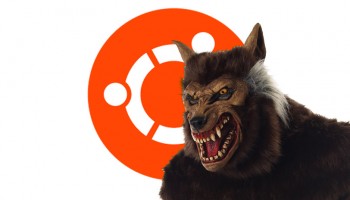Source: The state of Computer Vision and AI: we are really, really far.
Uncategorized
Ubuntu 15.10 Codename Announced: Wily Werewolf
The word ‘Wily‘ is used to describe someone who is skilled or adept, while a ‘werewolf‘ is a mythological creature has been popularised in fiction as a human who turns into a wolf on a full moon.
The Ubuntu 15.10 name has been announced, alongside details of a new Ubuntu Phone that aids Canonical’s plan for single device convergence.
Source: Ubuntu 15.10 Codename Announced (And a Whole Heap More)
Artificial-Intelligence Experts Are in High Demand – WSJ
The field of artificial intelligence is getting hotter by the moment as Google, Facebook, Amazon, Microsoft and other tech companies snap up experts and pour funding into university research.
Source: Artificial-Intelligence Experts Are in High Demand – WSJ
The Strange Inevitability of Evolution – Issue 20: Creativity – Nautilus
Is the natural world creative? Just take a look around it. Look at the brilliant plumage of tropical birds, the diverse pattern and…
Source: The Strange Inevitability of Evolution – Issue 20: Creativity – Nautilus
The Genetic Map Of Europe – Brilliant Maps
The map above shows the genetic makeup of European countries based on Haplogroups. These groups each share a common ancestor.
Source: The Genetic Map Of Europe – Brilliant Maps
Linux for Lettuce | VQR Online
Who qualifies to be a bioinformatician? | Bioinformatics and Computational Biology
The Bioinformatician
We are aware that gray zones exist and will likely always exist, even as the field of bioinformatics evolves. However, it will be easier to provide an answer to our question. As for the definition provided by OED, we propose that bioinformaticians are experts in the field of bioinformatics. They may be users, but this is not enough to consider them as bioinformaticians (i.e., an expert). Bioinformaticians are scientists who develop and conduct research based on a bioinformatics approach, they do not just use the tools to better understand a biological problem. It is a little like saying that driving your car to work does not make you a mechanic. A bioinformatician is a scientist who understands the underlying “mechanics” of bioinformatics or, more realistically, an aspect of bioinformatics (genomics, protein structure predictions, phylogenetic models, etc.). In a more conceptual framework, bioinformaticians can perhaps be seen as the “missing link” required for improving multidisciplinary research. Since they can bridge biological sciences, informatics, and mathematics, fully fledged bioinformaticians can be valuable assets for multidisciplinary studies. For example, more and more bioinformaticians are becoming involved in major multidisciplinary studies such as those on cancer (Hanauer et al., 2007; Valencia and Hidalgo, 2012) as well as in whole-exome sequencing (WES), which is an increasingly important method used in medical studies (Sanders et al., 2012; Wang et al., 2013; Zhu et al., 2015).
Source: Frontiers | Who qualifies to be a bioinformatician? | Bioinformatics and Computational Biology
The top 100 papers : Nature News & Comment
Bioinformatics
The rapid expansion of genetic sequencing since Sanger’s contribution has helped to boost the ranking of papers describing ways to analyse the sequences. A prime example is BLAST (Basic Local Alignment Search Tool), which for two decades has been a household name for biologists wanting to work out what genes and proteins do. Users simply have to open the program in a web browser and plug in a DNA, RNA or protein sequence. Within seconds, they will be shown related sequences from thousands of organisms — along with information about the function of those sequences and even links to relevant literature. So popular is BLAST that versions8, 9 of the program feature twice on the list, at spots 12 and 14.
But owing to the vagaries of citation habits, BLAST has been bumped down the list by Clustal, a complementary programme for aligning multiple sequences at once. Clustal allows researchers to describe the evolutionary relationships between sequences from different organisms, to find matches among seemingly unrelated sequences and to predict how a change at a specific point in a gene or protein might affect its function. A 1994 paper10 describing ClustalW, a user-friendly version of the software, is currently number 10 on the list. A 1997 paper11 on a later version called ClustalX is number 28.
The team that developed ClustalW, at the European Molecular Biology Laboratory in Heidelberg, Germany, had created the program to work on a personal computer, rather than a mainframe. But the software was transformed when Julie Thompson, a computer scientist from the private sector, joined the lab in 1991. “It was a program written by biologists; I’m trying to find a nice way to say that,” says Thompson, who is now at the Institute of Genetics and Molecular and Cellular Biology in Strasbourg, France. Thompson rewrote the program to ready it for the volume and complexity of the genome data being generated at the time, while also making it easier to use.
The teams behind BLAST and Clustal are competitive about the ranking of their papers. It is a friendly sort of competition, however, says Des Higgins, a biologist at University College Dublin, and a member of the Clustal team. “BLAST was a game-changer, and they’ve earned every citation that they get.”
via The top 100 papers : Nature News & Comment.
Personalized medicine: Time for one-person trials : Nature News & Comment
Every day, millions of people are taking medications that will not help them. The top ten highest-grossing drugs in the United States help between 1 in 25 and 1 in 4 of the people who take them (see ‘Imprecision medicine’). For some drugs, such as statins — routinely used to lower cholesterol — as few as 1 in 50 may benefit1. There are even drugs that are harmful to certain ethnic groups because of the bias towards white Western participants in classical clinical trials2.
Source
The days are long but the decades are short – Sam Altman
The days are long but the decades are short – Sam Altman.



